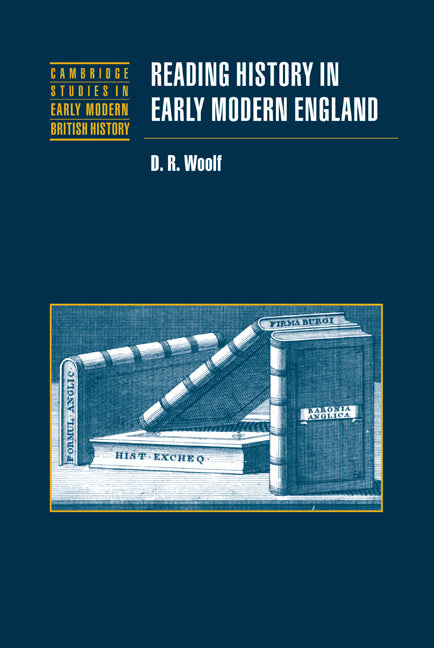Freshly Printed - allow 8 days lead
Couldn't load pickup availability
Reading History in Early Modern England
A study of writing, publishing and marketing history books in the early modern period.
D. R. Woolf (Author)
9780521780469, Cambridge University Press
Hardback, published 18 January 2001
380 pages, 24 b/w illus.
23.6 x 15.8 x 2.8 cm, 0.829 kg
'D. R. Woolf's excellent new book … combining wide-ranging archival research with imaginative ingenuity.' Kevin Sharpe, The Times Literary Supplement
This book focuses on the 'after-life' of historical texts in the period between the arrival of printing in England and the early eighteenth century. Whereas previous studies of historical writing during this period have focused on their authors and on their style or methodology, this work examines the history book from a number of other perspectives. The intent is to situate the study of history books within the current literature on the history of the book and the history of print culture. After discussing the process whereby the inheritance of the medieval chronicle was broken down into a variety of different historical genres during the sixteenth century, the author turns to the questions of how and why history books were read, who owned them, the borrowing and lending of them, their production and printing, and methods for marketing and distributing them.
Introduction
1. The death of the chronicle
2. The contexts and purposes of history reading
3. The ownership of historical works
4. Borrowing and lending
5. Clio bound and unbound
6. Marketing history
Conclusion
Appendix A: A bookseller's inventory, c. 1730
Appendix B: History by auction: auction sale catalogues 1686–1700.
Subject Areas: Educational: English literature [YQE], Publishing industry & book trade [KNTP], Cultural studies [JFC], Social & cultural history [HBTB], Early modern history: c 1450/1500 to c 1700 [HBLH], British & Irish history [HBJD1]


